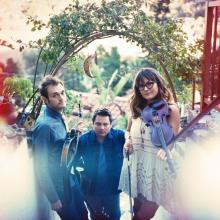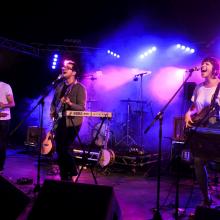dc
EVER SINCE I was little, my imagination has been shaped by superhero worlds, lore, and comic and animated adaptations. And while more “realistic” adaptations are the trend on the big screen, what enthralled me about characters such as Batman wasn’t that I thought he could be real; I was tuned instead to the ethos behind the caped crusader.
Superhero stories often seem limitless. At their best, they stretch the imagination to ask what type of world we want to exist and what it would take to get us there, while acknowledging hardships along the way.
Recently, I began a rewatch of the DC Animated Universe: TV shows, feature films, and shorts that aired mainly from 1992 to 2006. These shows were the first to capture my attention and shape my imagination. Batman: The Animated Series was my first love, with Kevin Conroy’s Batman and Mark Hamill’s Joker seared into my consciousness. As I watched, I made a particular note about the moral imagination of these shows: Superheroes in these shows don’t just refuse to kill — a theme recurring across superhero worlds — they refuse to even let anyone die.
Take Season 1, Episode 11 (S1 E11) of Superman: The Animated Series: Lex Luthor’s weapons factory is about to explode, with spilled molten metal splashing about. Lana Lang is hanging by a thread above certain death; so is Lex Luthor, who unintentionally caused this mess in his attempt to kill Superman. But then, at the last moment, Superman bursts forth from under the molten waves, crashing out of the top of the factory just before it explodes, with Lana in one arm and the villain in the other.
It’s a scene that strains credulity. There’s an improbability of timing, a lack of “logic” in doubling back for the person trying to kill you, and the storyteller’s refusal to explain how Superman managed to save the villain. But what’s key here is the insistence, and flaunting, that Superman would save the villain. It doesn’t need an explanation; it’s assumed.
For a while, I was paying attention to how the writers made this subtext believable. Superman saves some villains in hopes they can be rehabilitated, others because they are being used by larger, more villainous characters. Why? The simple answer is that these were shows for families and children. The same reason the comic book’s “League of Assassins” became the TV show’s “Society of Shadows” and villains set out to “destroy” rather than “kill” heroes.
But this death-resisting subtext becomes dialogue in S2 E9 of Superman: The Animated Series when some kids plead with Metallo, a villain disguised as a hero, to save Lois Lane from an exploding volcano. “Superman wouldn’t let anyone die, no matter how bad they were,” the kids protest. “I’m not Superman,” Metallo retorts.
POPULAR CULTURE PLAYS an important role in shaping our view of the possible. Ta-Nehisi Coates, author of Between the World and Me, for years wrote Marvel’s Black Panther and Captain America comics. “I think we don’t always realize the extent to which the culture actually interacts with politics,” Coates said on Ezra Klein’s podcast. “I could advocate for all of the policies in the world ... but it really, really occurred to me that there’s a generation that is being formed right now that’s deciding what they will allow to be possible, what they will be capable of imagining. And the root of that isn’t necessarily the kind of journalism that I love that I was doing, the root of that is the stories we tell.”
In this issue, sojo.net associate news editor Mitchell Atencio looks at some of those stories — in particular, superhero comics — and explores what is not being told, and how pop culture often avoids grappling with the way our country approaches issues such as policing and incarceration. That failure has consequences far beyond the DC and Marvel universes.

Maryuri, a recent migrant from Venezuela whose last name is withheld to protect her identity, speaks in front of the John A. Wilson Building in Washington, D.C., during a Feb. 22 press conference organized by Congregation Action Network to advocate for better migrant support services. Evan Robinson-Johnson/Sojourners.
Local faith leaders and asylum seekers gathered on Feb. 22 to demand that Washington, D.C., government allow asylum seekers to access resources available to the rest of the district’s unhoused population.
My favorite place in the Sojourners’ Fellowship house is the chair by the window. Each morning, I tiptoe through the dark house, flip on a lamp, and turn on the kettle. I center myself in the lingering darkness of the previous night.
Two concerts in the nation’s capital next week by conservative singer-songwriter and activist Sean Feucht have raised concerns about security after an event in Portland, Ore., last month ended in violence between far-right extremists and counterprotesters.
Black church leaders, anti-racist activists, and Washington, D.C., officials urged Washingtonians to exercise caution as they prepared for right-wing demonstrations on Wednesday as Congress convenes to certify the Electoral College votes in favor of President-elect Joe Biden.
Organized by Avaaz, a U.S.-based civic organization that emphasizes global activism, intends for the "Monument for our Kids" to put pressure on Congress to take action on gun control. Images of the striking visual have been widely shared on social media, with the hashtag #NotOneMore.

Image via Dave Zirin/Facebook
In the three days since the Trump administration announced an “extreme vetting” process for refugees — and failed to communicate the terms of his order with government agencies, resulting in confusion and an immediate denial of entry to many refugees and green card holders with visas — groups from international corporations to immigration attorneys have stepped up to register their concern.

Image via Schmidt_Alex / Shutterstock.com
There has so far been no official accounting of what happened to Smith the morning of Nov. 1 on the second-floor landing of the Marbury Plaza Apartments in Southeast D.C. The Medical Examiner’s report tells part of the story, but there is still so much more unknown.
"I'm no longer stating that my son was beaten to death. My son was tortured to death. There are more injuries in the coroner’s report than I could visibly see with my eyes. There were injuries on my son’s back. He was hemorrhaging — the back. The back of his head was busted,” said mother Beverly Smith.
Lonely Planet just ranked Washington, D.C., as the #1 Best Place to Travel in the world(!). Coming on the heels of Forbes crowning D.C. the coolest city in America in August, the admittedly unexpected parade of accolades appears to just be starting for the place Sojourners has called home for the past few decades.
Of course, “coolness” is elusive by nature — if it was measurable, it wouldn’t be cool — and the metrics used by both outlets are questionably desirable, if technically true for a portion of the city. Lonely Planet points to a city “whose official religion is national politics,” while Forbes lists “higher influxes of new people” and “most college degrees per capita.”
This shows a problematic tendency to weight Washington the industry over D.C. the city (this post from DCis toutlines that nicely). It also largely misses what’s actually great about this place. I’ve found D.C. to be far beyond the House of Cards-meets-Cherry Blossom Festival sketch beloved by press and many residents alike. In my daily experience, D.C. is collaborative, generous, and deserving of accolades in ways that continually surprise.
Based on my very unscientific metrics of personal observation and emotional investment, here are a few things that are uniquely great about D.C.
Last night, Washington, D.C., residents young and old gathered in the Columbia Heights neighborhood to protest the shooting of Michael Brown, stand in solidarity with those on the front lines of continued protests in Ferguson, Mo., and let our governmant and law enforcement officials know that #BlackLivesMatter. The protest was organized by a Howard University student who hails from St. Louis and "needed to do something" given the reports she received from friends and family on the ground in Ferguson.
About a dozen Sojourners employees were in attendance. Check out the video below with testimony from two protestors who spent some time over the last week in Ferguson.
The last time I listened to Nickel Creek was to analyze their adaptation of Robert Burns’ poem, “Sweet Afton,” in my English literature class in college three years ago. Indeed, the waters of Nickel Creek flow gently, a trait reflected in “Sweet Afton” and many other Nickel Creek staples. And that general lack of bite, paired with an almost robotic mastery of each band members’ respective instrument, pushed me away from the band.
So it was strange that, with no expectations and an arbitrarily negative perception of the classic folk band, I really enjoyed seeing Nickel Creek reunite in Washington, D.C. after a six-year hiatus. The show, in sum, was really, really good.
People often say the mark of a true “master of a craft” is one who makes something ridiculously difficult look easy. Chris Thile, former member of Nickel Creek and front man for folk group Punch Brothers, is one of those people. As my buddy standing next to me at last night’s Punch Brothers show in Washington, D.C. said, “It’s like he’s an extension of the mandolin. He can do anything he wants with that thing.” I mean, the guy can almost flawlessly whoop out some Bach on the mandolin.
While musicianship is certainly present on their recorded material, the talent of each member of the five-piece band is fully realized during their live shows, which are more like jam sessions. With the encore, they ended up playing for almost two hours to a sold out crowd at the 9:30 Club.
It almost got to the point where I didn’t believe they were real. They almost seemed like robots.
Freelance Whales’ performance on Wednesday was a bit like my experience with Hurricane Sandy: One minute was jubilation at the prospect of no work for two days, and the next minute was a mellowed out restlessness, presumably from staying inside for too long.
That is definitely not to say that the performance was by any means terrible or disengaging. Rather, it simply means that the group from Queens meandered through most of their current catalogue, which consisted of the poppy, upbeat Weathervanes and the recently released, mellow, ambient Diluvia.
For popular catchy songs like “Generator ^ First Floor,” “Hannah,” or “Ghosting,” the crowd was quick to nod their heads, raise their hands, and sing along.
On Sunday, we went to the Washington National Cathedral, a gigantic Episcopal church and self-professed “spiritual home for the nation.” This strikes me a bit funny, as a) Episcopalians make up fewer than half a percent of the nation, and b) America, regardless of religious affiliation, seems more interested in mammon than it does in spirit.
But our friend has been attending the cathedral since she moved to D.C. a few months ago, and I worshipped in Episcopal churches for about seven years, not since 2007, and, frankly, I had missed how the traditional liturgy can transport me to a different place, psychologically speaking – a place where a man dying on a wooden cross 2,000 years really does seem to matter in a cosmic, world-changing kind of way. Plus, I wanted to see the neo-Gothic architecture in its transcendent beauty. This is the rub, right? Mammon makes beautiful things. What was difficult for me about the Episcopal church is the same thing that’s difficult about Washington, D.C.: It’s the wealth, it’s the power, it’s the privileged way of life that seems very distant from my beer-and-burgers existence, let alone from Jesus who had no place to lay his head.
Responding to attacks on Muslims, Sojourners has been placing ads around the country with a simple reminder of Jesus' command regarding how we treat others. The billboards and subway ads read: “Love Your Muslim Neighbors.”
Now, the attacks have reached our nation’s capital. Pamela Geller and the American Freedom Defense Initiative’s hateful ads that refer to Muslims as “savages” were placed in Washington, D.C., Metro stations this week following a lengthy court battle. Sojourners was ready for this development and has purchased “Love Your Muslim Neighbors” messages that will be going up in the some of the same Metro stations targeted by the American Freedom Defense Initiative and should appear by the 15th of October.
The ongoing attacks against religious minorities both in the United States and around the globe are saddening and disturbing. You can help respond to the latest developments in DC by clicking here.











